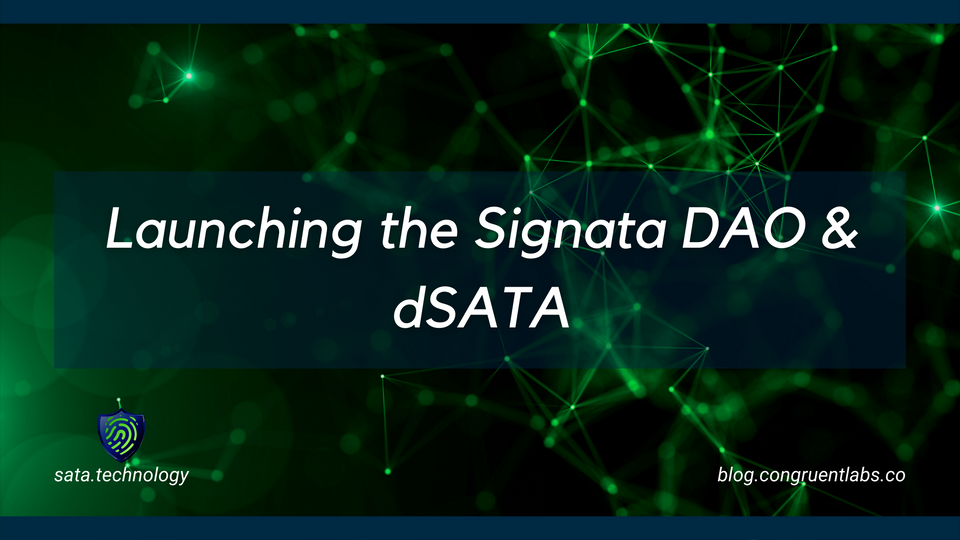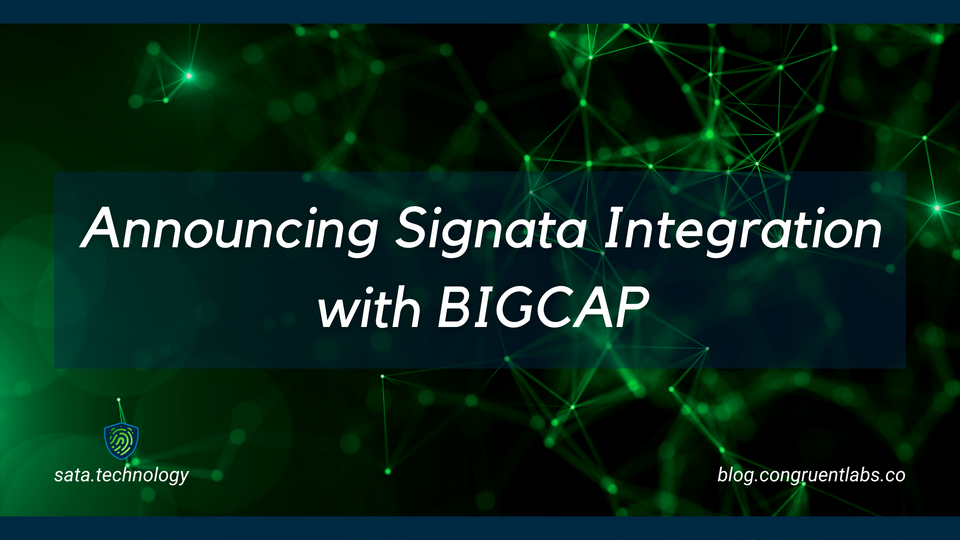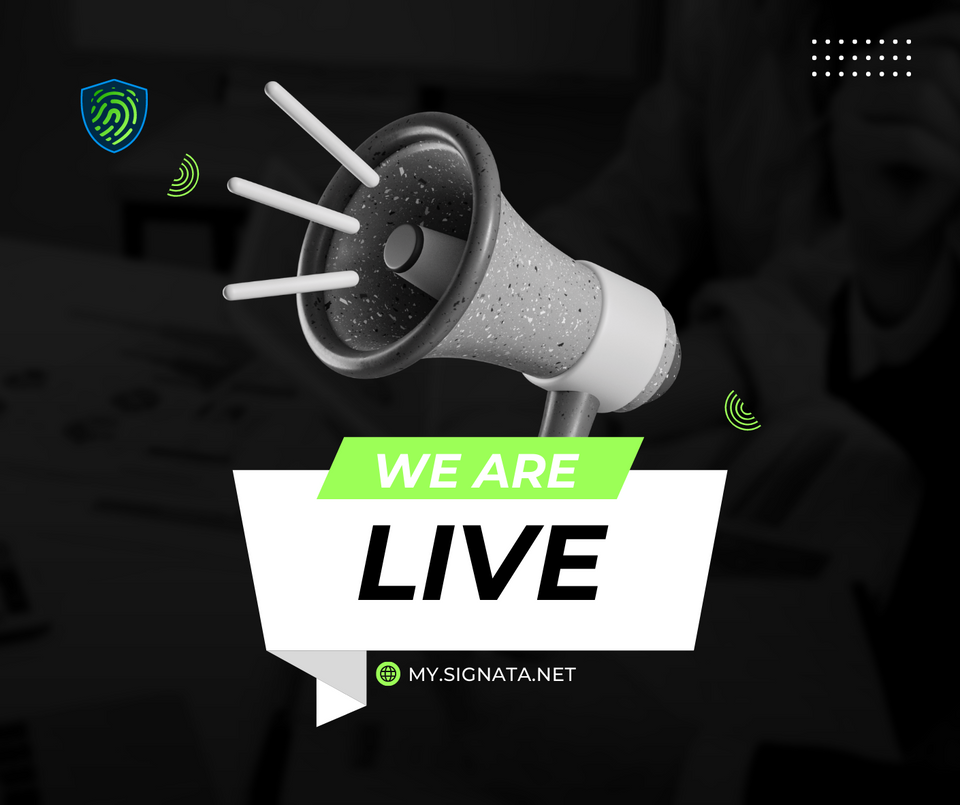A long term goal for the Signata project has been decentralization. Two essential factors in decentralization crypto projects are how the token is governed, and how systems are built to utilize the token.
The First Plan
The first plan for decentralization of Signata involved the deployment of a DAO contract derived from Compound Finance. This would be fully capable as a DAO, but because the Signata token was already deployed this would require holders to constantly snapshot their balances to prevent duplicate votes on proposals, doubling the amount of network fees needed to interact with each DAO proposal.
The Second Plan
An alternative approach to add DAO functions to an existing token is to "wrap" the token into a new DAO token, effectively transferring all tokens to a new token that unlocks DAO functionality for it. This is a simple and elegant tool, but requires both the wrapped and unwrapped tokens to have sufficient liquidity on an exchange to prevent arbitrage trading between wrapped and unwrapped. Or, if the wrapped version is not tradeable, it would then prevent its intended utility whilst in its wrapped state, and integrators would be required to recognise both instances of the token within their dApps.
The Third Plan
Signata is a token designed for utility. It's a payment mechanism for Decentralized Identity, and should only be consumed for that purpose. And a factor in its utility is that it isn't expensive to transact with - we won't get into the fluctuations of network fees, that is a can of worms if we open that discussion, and Signata is already deployed onto cheaper chains to transact on compared to Ethereum - but the addition of DAO functionality into a utility token adds a small cost onto every transaction. A simple ERC20 token transfer is slightly less expensive compared to one that includes snapshotting of holder balances.
And so the third plan was born: to split Signata into two separate tokens. Signata (SATA), and Signata DAO (dSATA). SATA will remain as is for pure utility, and dSATA is launched as a separate token for pure DAO usage. The SATA tokens not yet circulating will be controlled by the dSATA DAO.
Tokenomics
dSATA has a fixed supply of 50 million tokens minted at launch. 25 million dSATA will be added to the Uniswap liquidity pool. 25 million dSATA will be reserved for the migration of SATA holders.
After launch and the completion of the migration, dSATA will not mint any more supply. All supply will remain in circulation to ensure long term fairness in its distribution for the project governance.
Migration
A 14 day window is now open for SATA holders to choose if they want to swap their SATA for dSATA. This is a one-way migration. If someone swaps their SATA for dSATA, they cannot swap their dSATA back into SATA. Click here to use the migration tool.
The dSATA token contract is 0x49428f057dd9d20a8e4c6873e98afd8cd7146e3b
SATA holders must decide if they wish to gain voting rights for the project by swapping to dSATA, or if they wish to retain SATA for its utility purposes.
This migration window is of a fixed timespan to prevent any future arbitrage trading opportunities after launch. The price of dSATA is subject to decentralized exchange trading and not controllable after launch.
Any SATA collected by the swap contract will be moved back into control of the DAO.
Taxes
Trading dSATA on Uniswap will incur a 1% tax on both buys and sells of the Uniswap pair (not on any other transfer). This tax will be used to increase liquidity of the SATA/wETH Uniswap V2 liquidity pair. This tax is modifiable by the DAO.
Proposal Managers
To protect the project from DAO attacks, there will be no minimum number of tokens required for holders to submit proposals to the DAO contract. Proposal managers will instead be community selected, with the first acting in this role being Congruent Labs, who will delegate this role to those chosen by the community.
Voting Power
As any SATA holder that migrates to dSATA will almost halve their voting power (from 1 token = 1 vote in roughly 25 million circulating supply of SATA to 1 token = 1 vote in 50 million circulating supply of dSATA), therefore any holder that migrates will be issued a Governance NFT that restores their voting power in the DAO. The implementation details for this will be released when the Governor DAO contract is deployed.
Decentralizing the Build Process
Signata was always designed to be a platform for others to build upon, not just a single provider building exclusively using a single token. To encourage expansion of the project ecosystem, the Signata project team will no longer publish any roadmap or project management information. All project activities will be managed publicly on GitHub. Less formal discussions for development will be managed in Discord, but discussion of the tokens will not be permitted within the group.
Re: Snapshot.org
Snapshot.org provides the ability for non-DAO tokens to function as DAOs - cryptographic signatures of token holders are used to capture votes against proposals off-chain. This is extremely useful as an approach for operating a DAO, but it would still require the treasury to remain under the control of an entity outside of the DAO. It is far better for decentralization to have treasury-modifying votes to actually release funds from an on-chain time locked contract, so no dependencies on third parties are required for fund distributions.





